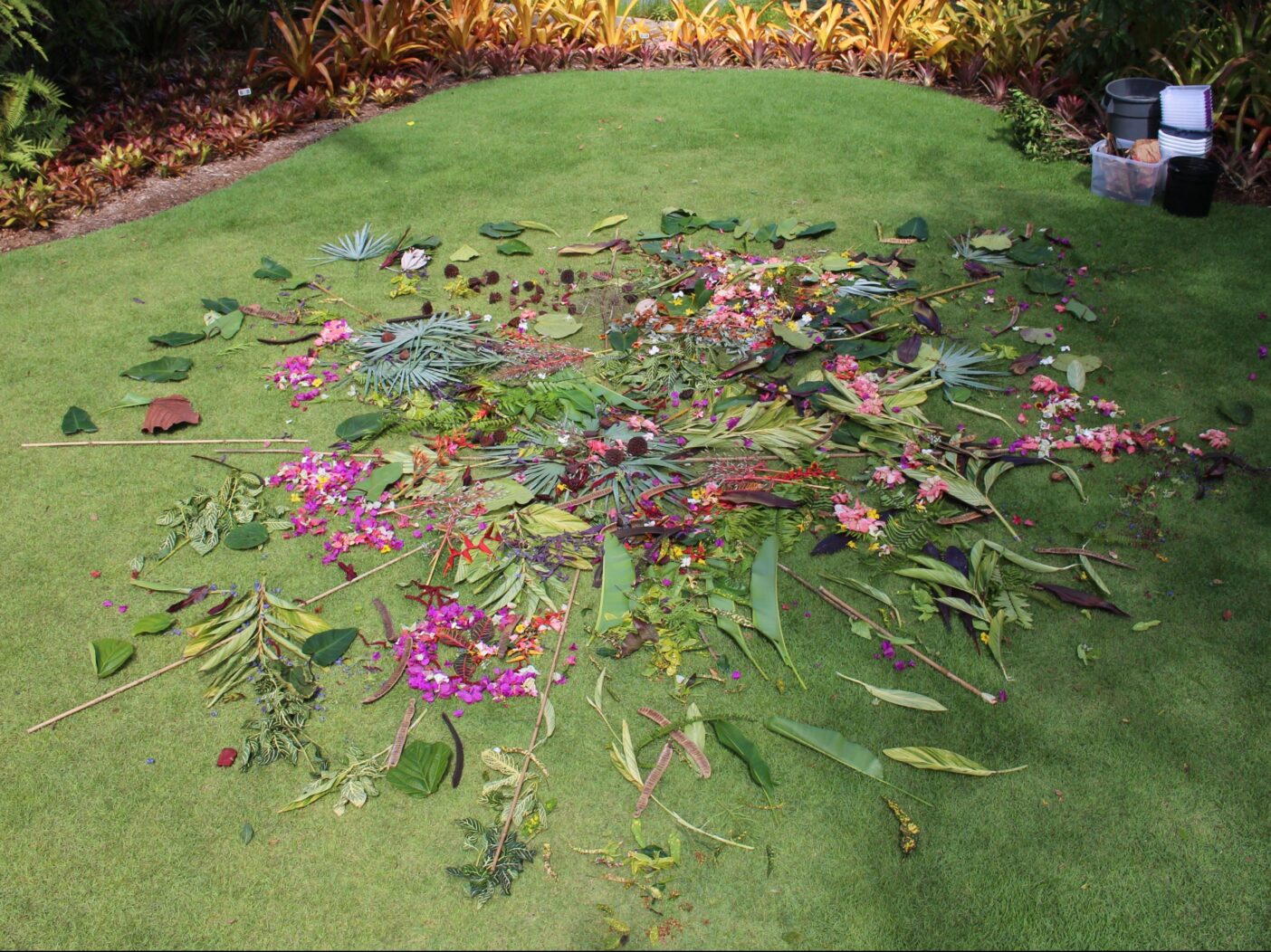
by: Taylor Burnham, Buehler Enabling Garden Coordinator
While summertime marks a down time for schools and snowbirds, the Garden’s therapeutic horticulture programs continue to grow. On July 6th, a group of eighteen children with visual impairments, twenty high school assistants, and a handful of guiding adults visited Naples Botanical Garden for a therapeutic horticulture program through a partnership with Lighthouse of Collier. The local organization provides programs and support for individuals who are blind and partially sighted in our community. They offer an annual summer camp for children with vision loss, of which the Garden was one of the field trips. The program consisted of three hours of sensory garden programming, which ranged from building a giant nature mandala, exploration of the Smith Children’s Garden and play in the splash feature, a performance by a local violinist connected paired with engagement with herbs, and scented lavender sachet making.
One of the highlights of the program came in the form of the nature mandala which the participants constructed on the lawn overlooking the Kapnick Brazilian Garden. Mandala is Sanskrit (an ancient Indian language used liturgically for many eastern religions and adopted by many wellness facilitators) for “circle.” The making of a mandala is often used as a way to represent unity and is a therapeutic exercise to channel gratitude and self-reflection. The making of mandalas with natural materials is a way of expressing love and unity with nature, as the art already present in nature is adapted to take a new pattern in the form of a community art piece.
 The program participants were presented with the mandala center and eight sections indicated by bamboo dividers. Dried Poinciana pods, yellow and red gaillardia blooms, and waxy palm fronds were just a few of the many sensory natural materials placed around the circle in containers as the artistic medium. While mandalas are typically made with a visual pattern in mind, in order to highlight the abilities of the group the instruction for creating the design was to place the most interesting material towards the center. This yielded an extremely interesting piece reflective of the group, as each child’s imaginative input was valued- no matter what that looked like!
The program participants were presented with the mandala center and eight sections indicated by bamboo dividers. Dried Poinciana pods, yellow and red gaillardia blooms, and waxy palm fronds were just a few of the many sensory natural materials placed around the circle in containers as the artistic medium. While mandalas are typically made with a visual pattern in mind, in order to highlight the abilities of the group the instruction for creating the design was to place the most interesting material towards the center. This yielded an extremely interesting piece reflective of the group, as each child’s imaginative input was valued- no matter what that looked like!
The exercise of creating a nature mandala was a creative and therapeutic way for the children with vision loss to engage nature, emphasize ability over disability, and to use teamwork and communication to bond with one other to create art. This ephemeral (meaning: lasting a short time) art piece existed only for a day before nature took its course and reclaimed it. However, its influence continued even after completion as the temporary-nature of the art piece drew staff, visitors, and volunteers together in conversation about art, horticulture, and wellness.
For more ideas regarding facilitating therapeutic group nature projects, see:
Common Threads: Weaving Community through Collaborative Eco-Art (2014) by Sharon Kallis.
Health Through Horticulture: Indoor Gardening Activity Plans (2011) by Eugene Rothert.

